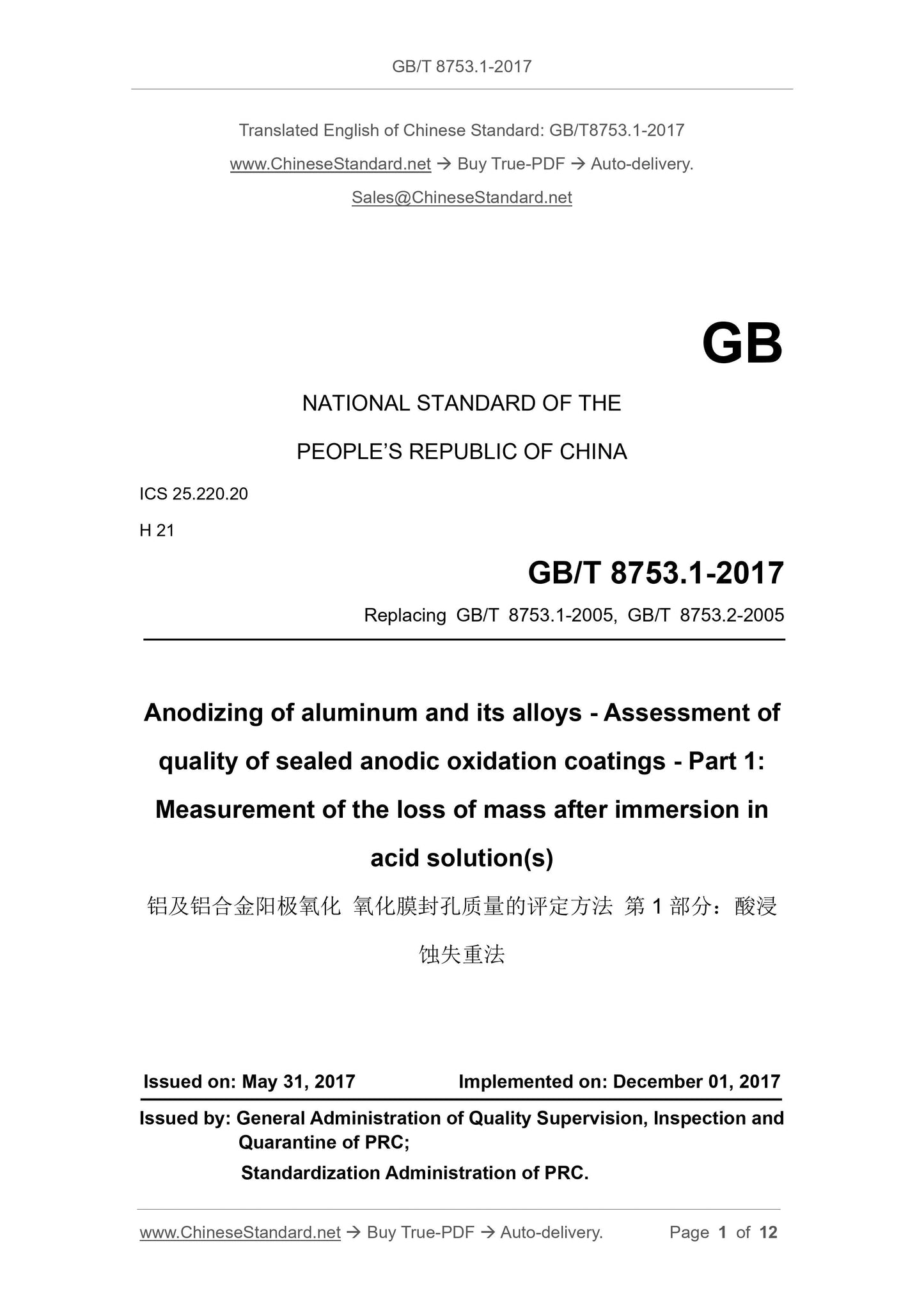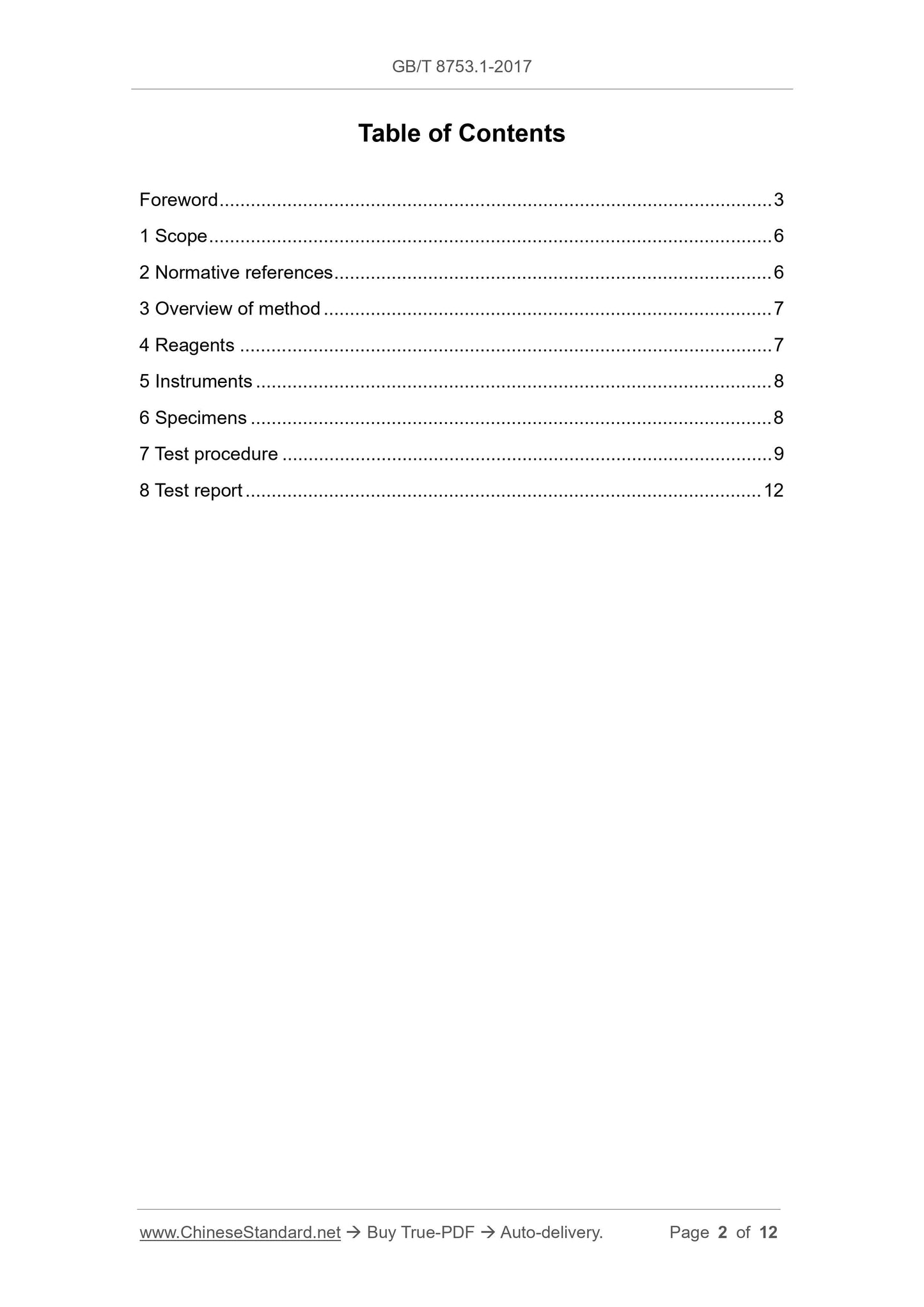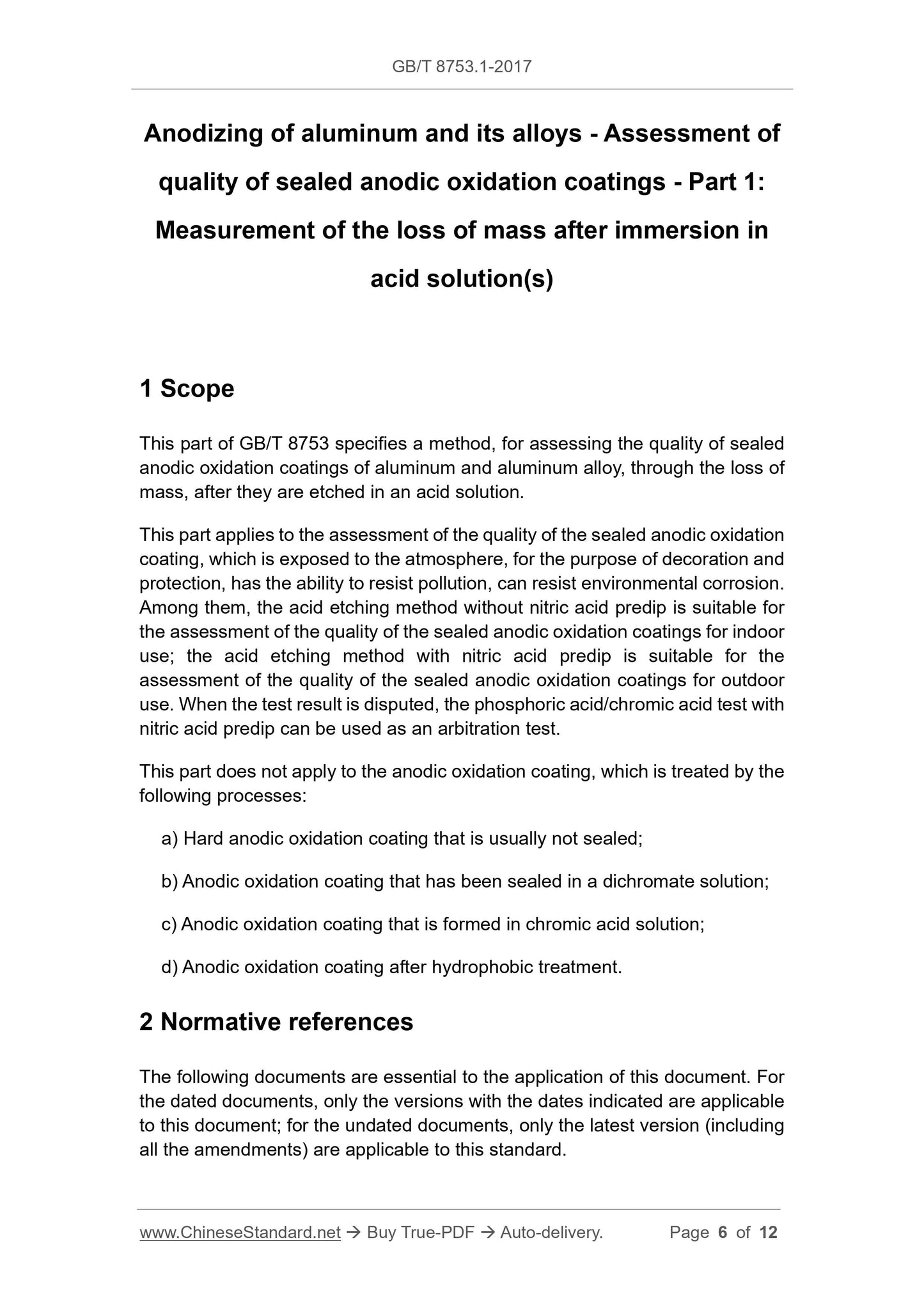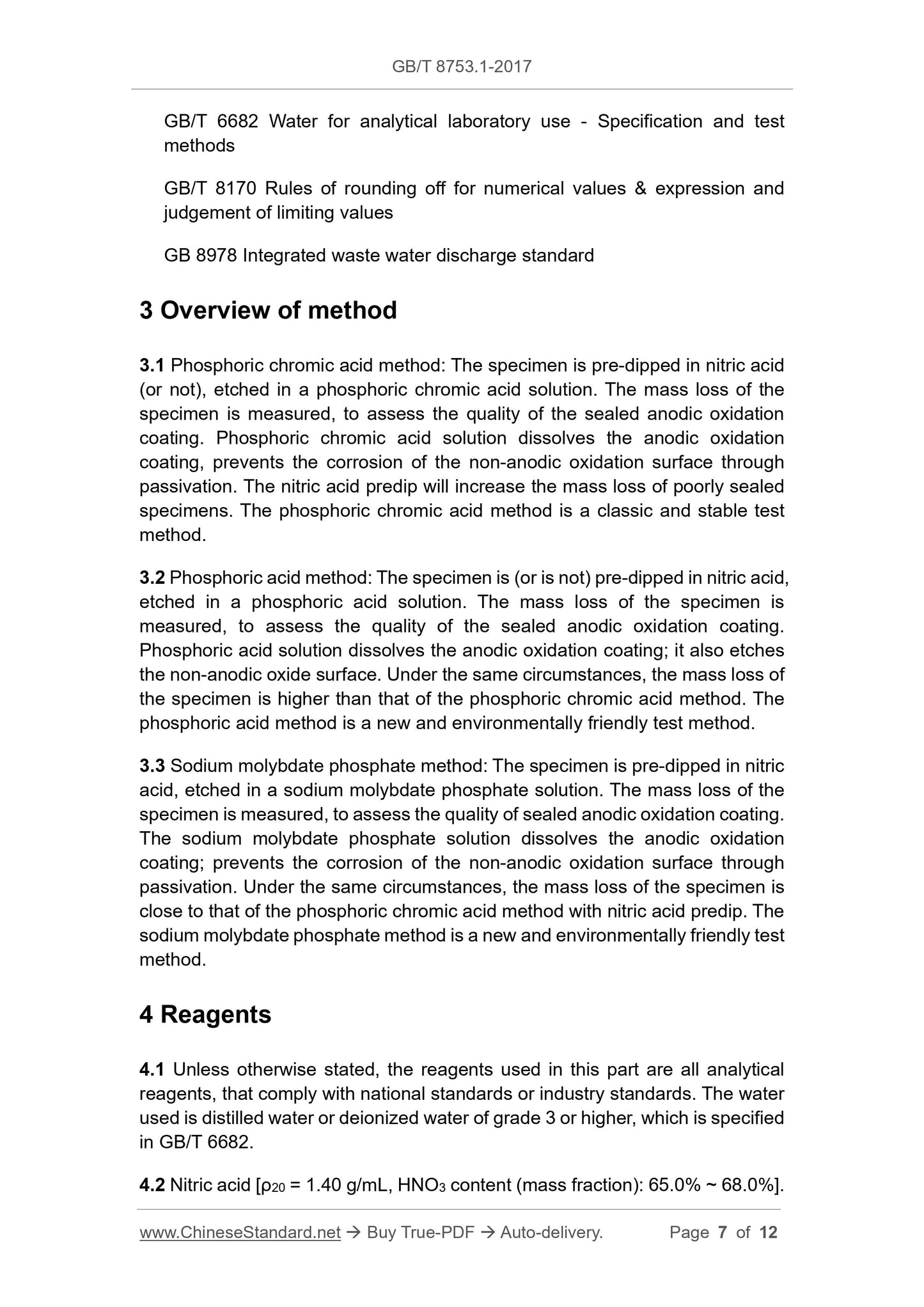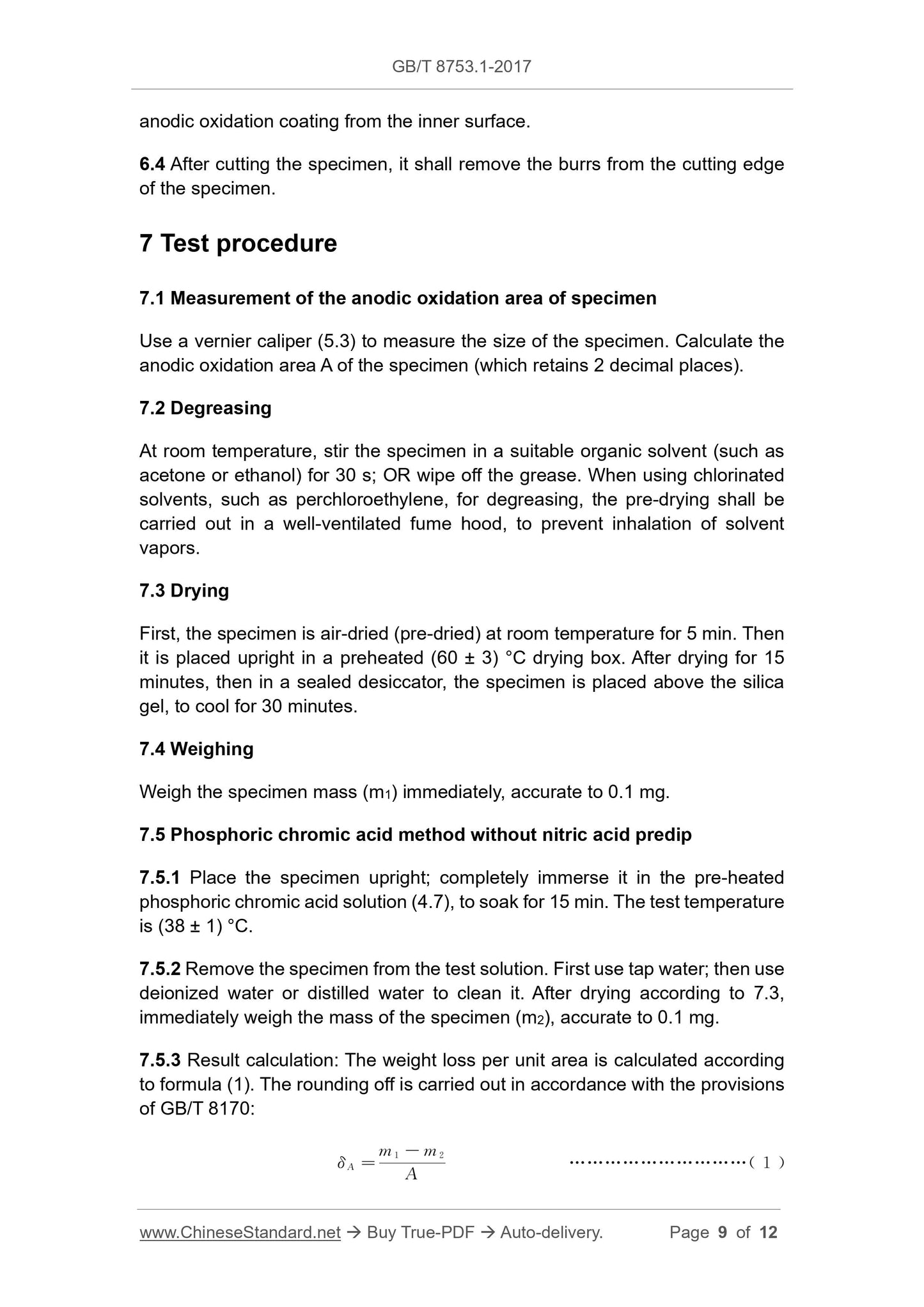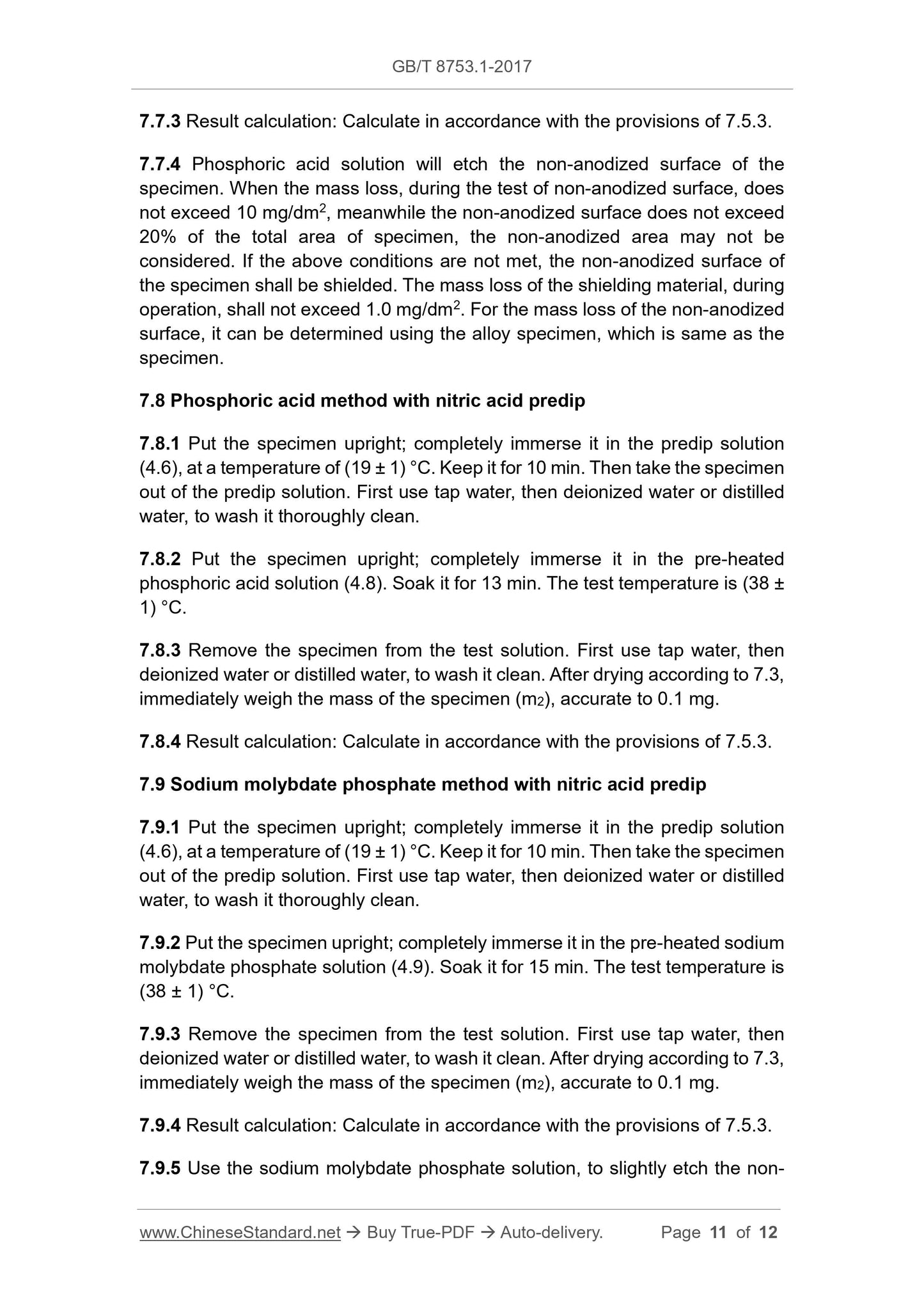1
/
of
6
www.ChineseStandard.us -- Field Test Asia Pte. Ltd.
GB/T 8753.1-2017 English PDF (GB/T8753.1-2017)
GB/T 8753.1-2017 English PDF (GB/T8753.1-2017)
Regular price
$110.00
Regular price
Sale price
$110.00
Unit price
/
per
Shipping calculated at checkout.
Couldn't load pickup availability
GB/T 8753.1-2017: Anodizing of aluminum and its alloys - Assessment of quality of sealed anodic oxidation coatings - Part 1: Measurement of the loss of mass after immersion in acid solution(s)
Delivery: 9 seconds. Download (and Email) true-PDF + Invoice.Get Quotation: Click GB/T 8753.1-2017 (Self-service in 1-minute)
Newer / historical versions: GB/T 8753.1-2017
Preview True-PDF
Scope
This part of GB/T 8753 specifies a method, for assessing the quality of sealedanodic oxidation coatings of aluminum and aluminum alloy, through the loss of
mass, after they are etched in an acid solution.
This part applies to the assessment of the quality of the sealed anodic oxidation
coating, which is exposed to the atmosphere, for the purpose of decoration and
protection, has the ability to resist pollution, can resist environmental corrosion.
Among them, the acid etching method without nitric acid predip is suitable for
the assessment of the quality of the sealed anodic oxidation coatings for indoor
use; the acid etching method with nitric acid predip is suitable for the
assessment of the quality of the sealed anodic oxidation coatings for outdoor
use. When the test result is disputed, the phosphoric acid/chromic acid test with
nitric acid predip can be used as an arbitration test.
This part does not apply to the anodic oxidation coating, which is treated by the
following processes:
a) Hard anodic oxidation coating that is usually not sealed;
b) Anodic oxidation coating that has been sealed in a dichromate solution;
c) Anodic oxidation coating that is formed in chromic acid solution;
d) Anodic oxidation coating after hydrophobic treatment.
Basic Data
| Standard ID | GB/T 8753.1-2017 (GB/T8753.1-2017) |
| Description (Translated English) | Anodizing of aluminum and its alloys - Assessment of quality of sealed anodic oxidation coatings - Part 1: Measurement of the loss of mass after immersion in acid solution(s) |
| Sector / Industry | National Standard (Recommended) |
| Classification of Chinese Standard | H21 |
| Classification of International Standard | 25.220.20 |
| Word Count Estimation | 7,780 |
| Date of Issue | 2017-05-31 |
| Date of Implementation | 2017-12-01 |
| Older Standard (superseded by this standard) | GB/T 8753.1-2005; GB/T 8753.2-2005 |
| Quoted Standard | GB/T 6682; GB/T 8170; GB 8978 |
| Issuing agency(ies) | General Administration of Quality Supervision, Inspection and Quarantine of the People's Republic of China, Standardization Administration of the People's Republic of China |
| Summary | This standard specifies the aluminum and aluminum alloy anodic oxide film in the acidic solution after etching, according to the quality of the assessment of the quality of its sealing method. This standard is applicable to the assessment of the quality of anodic oxide film sealing for exposure to environmental protection and for the purpose of decoration and protection. The acid etching method with no nitric acid prepreg is suitable for the evaluation of the sealing quality of anodic oxide film for indoor use. The acid etching of nitric acid prepreg is suitable for the evaluation of the sealing quality of anodic oxide film for outdoor use. When the test results are in dispute, nitric acid prepreg phosphoric acid method can be used as a arbitration test. This standard does not apply to the anodic oxide film treated as follows: a) a hard anodic oxide film which is normally not subjected to sealing treatment; b) an anodized film treated in a dichromate solution; c |
Share
